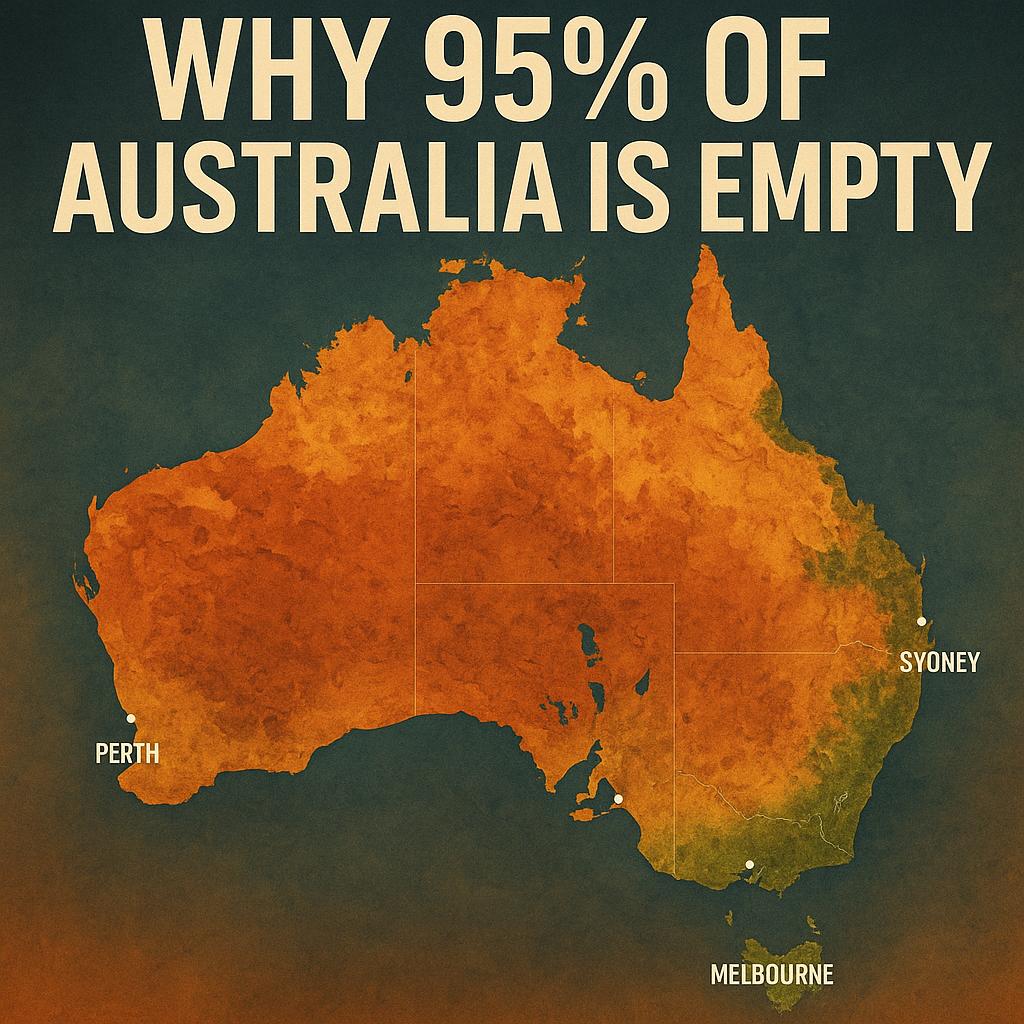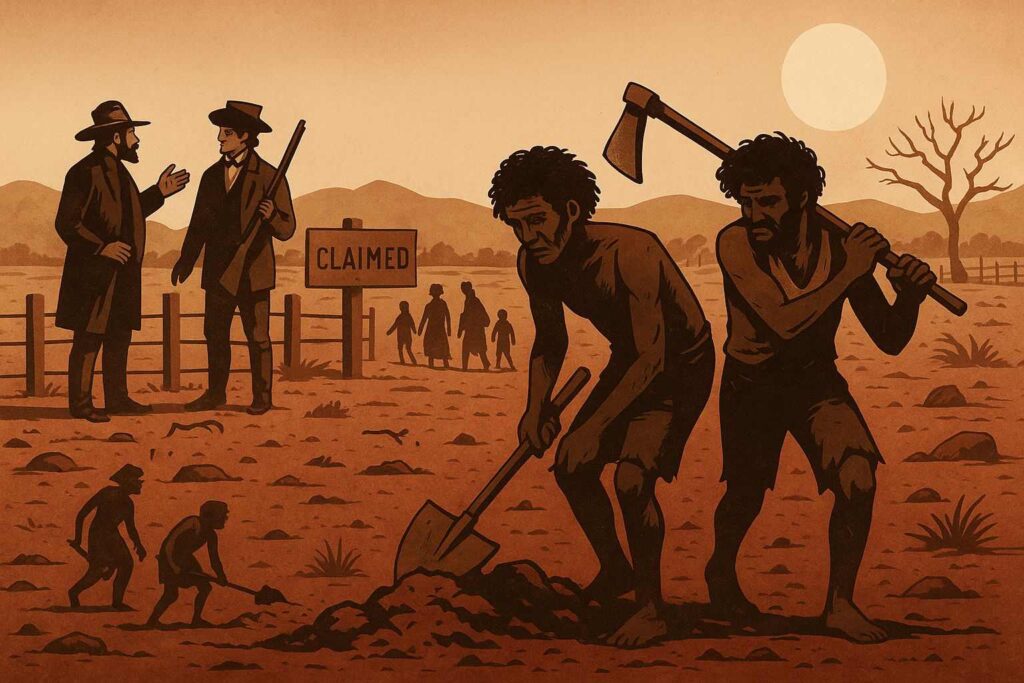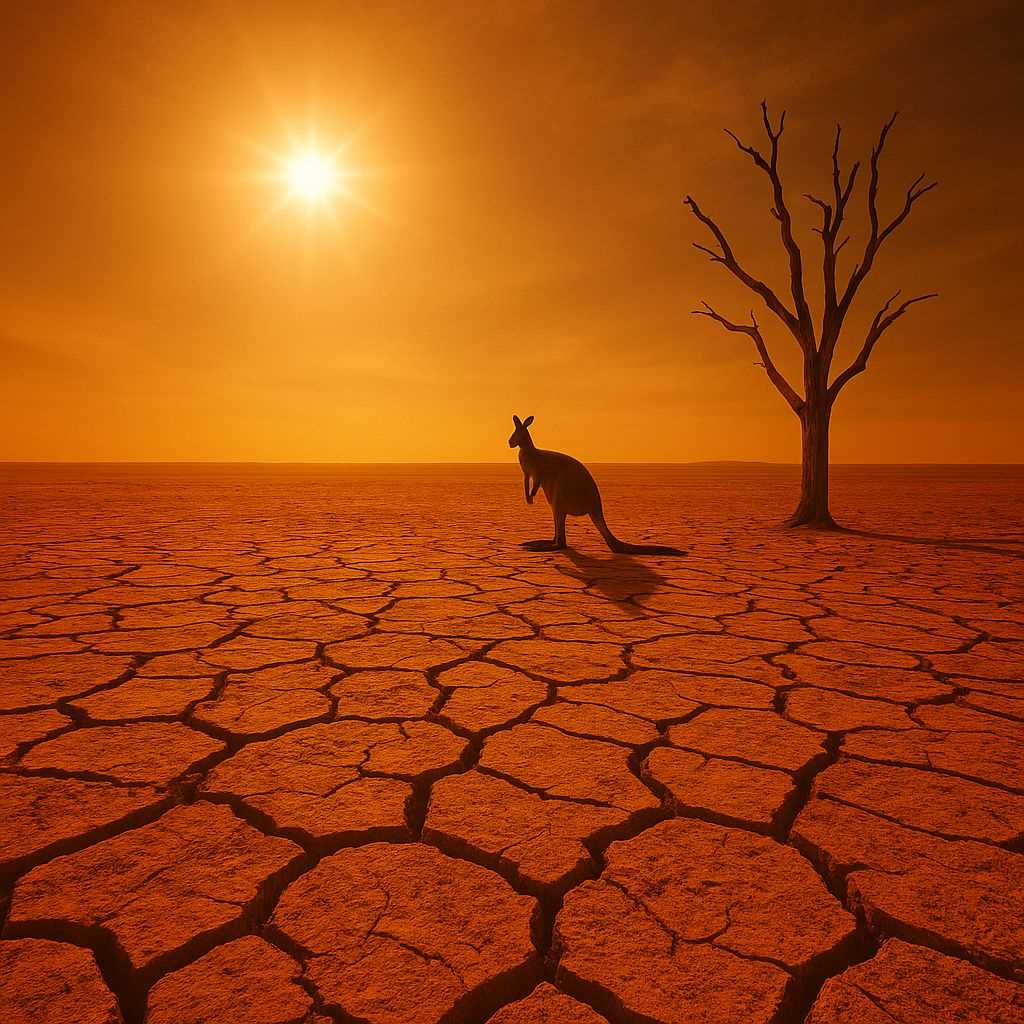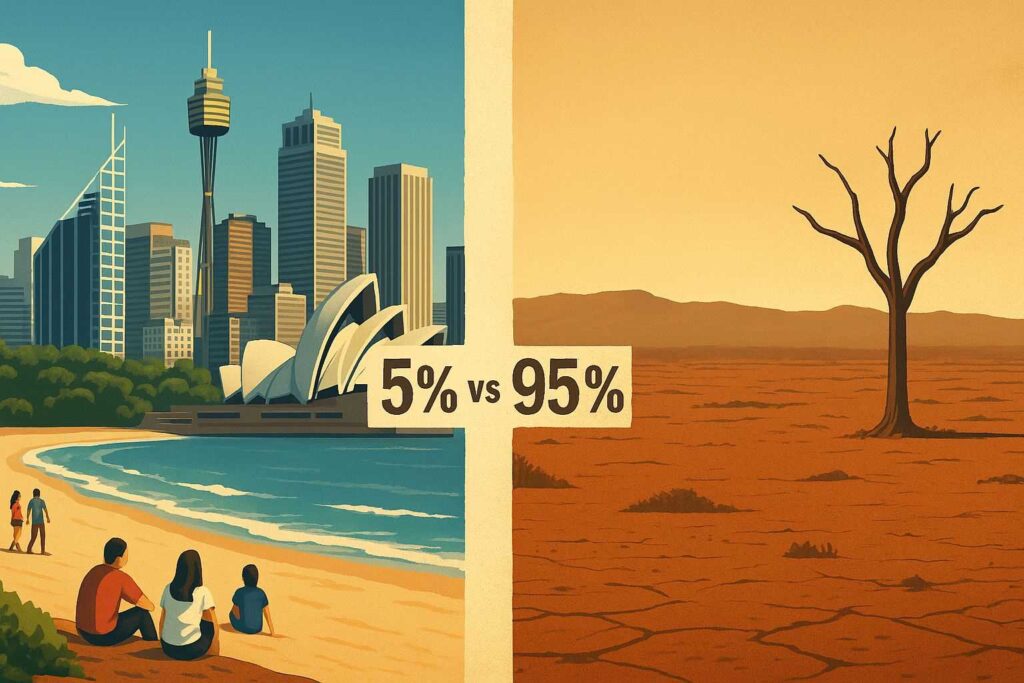Why 95% of Australia Is Practically Empty — The Harsh Truth Behind the Land Down Under

Australia is the sixth-largest country in the world — so massive, it could fit two entire countries the size of India within its borders. Yet, despite its vastness, nearly 95% of the land remains uninhabited. Most Australians live in just five coastal cities: Sydney, Melbourne, Brisbane, Perth, and Adelaide. But why is the rest of the country so empty?
The reasons go far deeper than geography — they’re rooted in colonial history, tragic population loss, and extreme climate.
⸻

A Colonial Past That Wiped Out a Population
Before European arrival, Australia was home to the Aboriginal people and Torres Strait Islanders, who had lived sustainably for thousands of years. They didn’t practice land ownership or fencing and lived in harmony with nature.
This changed in 1788 when British colonizers landed in Botany Bay. Seeing no formal land ownership, they declared it Terra Nullius — land belonging to no one — and claimed it for the Crown. What followed was the transformation of Australia into a penal colony, with the British transporting convicts and criminals to the new land.
With colonization came deadly foreign diseases like smallpox, measles, and bronchitis. The native population had no immunity. In places like Sydney and Port Phillip, over 50% of Indigenous people were wiped out within a year.
Worse still, even though the British had access to treatments and vaccines, they intentionally withheld them. The same tactic was used during disease outbreaks in colonial India, where millions died due to British neglect.
⸻
Land Grabs, Forced Labor, and Generational Trauma
Initially, British settlers claimed small patches of land. But over time, they rapidly expanded across regions like Hobart, Melbourne, and Brisbane — fencing off land that Indigenous Australians depended on for food, water, and survival.
These fences didn’t just block access — they were enforced. Indigenous people were often forced into labor, made to work in fields they once freely roamed, while many women were assaulted, including pregnant women sent to dive for pearls in deep waters.

This abuse led to violent resistance, and from 1795, a century-long conflict began. Multiple wars were fought, and by 1900, up to 90% of the Indigenous population had been wiped out. From an estimated 3 to 7.5 million, only around 30,000 to 75,000 remained.
⸻
Wars That Targeted the Survivors
Australia’s role as a British colony meant it was heavily involved in World War I and II. Thousands of Indigenous men were drafted into European wars. In WWI alone, 1 in every 5 men was sent to fight, and around 40% never returned. Japan even launched over 90 air attacks on Northern Australia during WWII, causing even more destruction and deaths.
⸻
The “White Australia” Policy That Followed
In 1901, the government passed the Immigration Restriction Act, also known as the White Australia Policy. Its goal: to slow or stop the growth of non-white populations, particularly Asians and Aboriginal Australians, ensuring British dominance.
Even as the country’s population grew, the native communities remained a small and shrinking minority.
⸻
Extreme Geography and Brutal Climate
Even if the historical damage hadn’t happened, most of Australia is nearly impossible to live in due to its harsh geography.

Australia is made up of three major landforms:
1. Western Plateau – Vast deserts that are too dry for life
2. Central Lowlands – Flatlands with salty, undrinkable water
3. Eastern Highlands – The only region with fertile land and fresh water
But even the livable zones are hit hard by:
• Droughts
• Flash floods
• Frequent cyclones
Why? The country’s southern border touches the cold waters of Antarctica, which reduces rainfall. And in the east, warm Pacific currents, mountain ranges, and high-speed trade winds combine to create violent weather extremes — often resulting in flooding and cyclones multiple times per year.
⸻

The Reality Today
Despite having a population of over 26 million, only 3.8% are native Australians — less than 1 million people. Most residents are concentrated in just a few urban zones, and over 70% of the country is classified as desert or drought-prone.
Add in salt-heavy soil, uninhabitable terrain, and brutal weather, and it’s clear why 95% of Australia remains empty.


